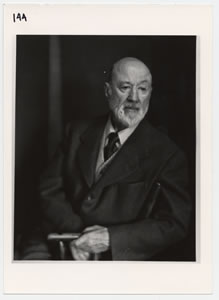My students might have expected that an entire course about one piece of music would have a short listening list. But I’m asking them to listen to the following:
- Concord Sonata (seven recordings)
- Four Transcriptions from “Emerson”
- Emerson Concerto
- The Celestial Railroad
- Fourth Symphony, second movement
- Songs: “Thoreau,” “He Is There!,” “They Are There!”
- Brant/Ives: A Concord Symphony
- Piano Sonata No. 1
- 19 tracks of Ives playing or improvising on Concord Sonata material
Â
Â
Except for the First Sonata, thrown in for comparison, all of this is material directly drawn from or leading to the Concord Sonata. The piano piece The Celestial Railroad is a distillation of the “Hawthorne” movement programatically based on Hawthorne’s eponymous short story, and Ives orchestrated it to make the second movement of his Fourth Symphony – or else the piano piece was based on the symphony movement, experts aren’t sure. The Emerson Concerto, reconstructed by the late David Porter, seems like an odd and unfinished piece, but as an earlier version of some of the “Emerson” material, it gives revealing insights into the Concord. And of course, the seven Concord recordings differ remarkably not only in interpretation but in content, since some include the flute in “Thoreau” and some don’t, only two (Pappastavrou and Kalish) include the small viola part in Emerson as well, and all differ in which variants they used among the ones Ives penciled into a few dozen copies of the published score. It’s interesting working with students on a piece of music that has no definitive text.Â
In addition, this is the most intensive reading course I’ve ever taught, with essays and stories by Emerson, Thoreau, Hawthorne, Bronson and Louisa May Alcott, as well as Ives’s Essays Before a Sonata. I’m using a selection from the Journals of Bronson Alcott, which I bought at considerable expense once at The Barrow used-bookstore in Concord. Hawthorne’s “The Celestial Rail-road” is a satire on Pilgrim’s Progress, a famous old classic none of the students seemed to have ever heard of, though it still seemed famous when I was a kid; I thought of requiring that for background, too, but it seemed a little much. I did finally track down the article by Oxford professor Henry Sturt (1863-1946) that Ives quotes at length in the Essays. He cites it as Philosophy of Art and Personality, but it’s actually an article by Sturt called “Art and Personality” in an old 1902 collection titled Personal Idealism. (The copy in the Bard library is so brittle that pages snap off like matzo crackers if I’m not careful.) It’s not a great article, steeped in platitudes that may have seemed unassailable in 1902 and backed up with little more than appeals to conventional wisdom, but it’s easy to see why his emphasis on “enthusiasm” as the prime artistic emotion and his rejection of the alleged subjectivity of artistic criteria would have appealed to both Ives’s imagination and his conservative streak. It’s also interesting how many of Sturt’s phrases, like “high vitality” and “Byronic fallacy,” work their way into Ives’s prose even when he’s not intentionally quoting. Ives seems to have written the Essays much with Sturt in mind, granting the poor old Oxford don his one touch of immortality.Â
I just hope the ice storm that’s getting under way here doesn’t interfere with tomorrow’s class. I’m getting too obsessed to consider canceling.
UPDATE: According to his obituary in a 1947 issue of Mind, which can hardly be taken as unobjective, Sturt was a proto-Fascist who believed in allegiance to the state and the superiority of northern Europeans. Yikes!

